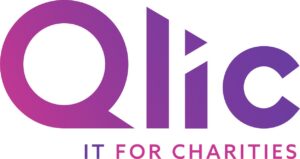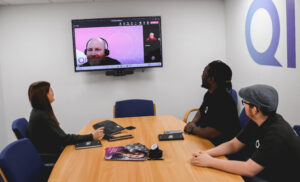In today’s increasingly remote and hybrid work environments, the value of collaboration tools has never been more critical. For nonprofits with limited resources and the need for streamlined communication and efficient project management is paramount, these tools are vital.
This blog explores the top collaboration tools that are particularly beneficial for nonprofits. Given the challenges faced by these organisations, selecting the right tools can make a significant difference in how they operate and achieve their missions. We will delve into the benefits and drawbacks of each tool, providing a comprehensive overview that considers key factors such as cost-effectiveness, usability and integration capabilities
Understanding the Importance of Collaboration in Nonprofits
The ability to work together seamlessly, both within the organisation and with external partners, is not just beneficial but essential. Effective collaboration lies at the heart of achieving the mission, enabling nonprofits to operate more efficiently and productively.
Moreover, the advance of digital collaboration tools has allowed nonprofits to extend their workforce across multiple locations. This expansion is not just about numbers; it’s about enriching the talent pool with diverse skills and perspectives. This helps to foster an agile culture that thrives on creativity and collaboration. Such a culture is pivotal in navigating the complex challenges nonprofits face, from fundraising and community engagement to project execution and impact measurement.
By harnessing the power of collaboration, nonprofits can create a more cohesive and responsive organisation. This unity and efficiency not only accelerate progress towards their mission but also help build a resilient framework capable of adapting to change and overcoming obstacles.
Key Features to Look for in Collaboration Tools
When venturing into the vast landscape of collaboration tools, nonprofits should consider a range of features to find the right fit for their unique needs, including:
- Accessibility and ease of use for team members
- Compatibility with existing systems and software
- Security measures to protect sensitive data
- Customisation options to meet specific nonprofit needs
- Pricing
- Scalability
Accessibility and ease of use for team members
Accessibility and ease of use means that tools should be intuitive and user-friendly that allows staff and volunteers to collaborate without hurdles. This inclusivity ensures that everyone can contribute to their fullest potential, regardless of their location or device.
Compatibility with existing systems and software
Compatibility with existing systems and software is another critical factor. The ideal collaboration tool should seamlessly integrate with the nonprofit’s current tech stack, enhancing workflows rather than complicating them.
Security measures to protect sensitive data
Security measures to protect sensitive data cannot be overlooked. Nonprofits often handle sensitive data related to their donors, beneficiaries and operations. A collaboration tool must offer robust security features to protect this information from unauthorised access or breaches and ensure compliance with security laws.
Customisation options to meet specific nonprofit needs
Customisation options play a vital role in tailoring the tool to meet the specific needs of a nonprofit. Whether it’s branding elements, workflow configurations, or permission settings, the ability to customise ensures the tool can adapt to the organisation’s evolving requirements.
Pricing
Pricing is always a consideration for nonprofits. The chosen collaboration tool should offer clear, transparent pricing that aligns with the organisation’s financial capacity, ideally providing nonprofit discounts or flexible payment.
Scalability
Lastly, scalability is essential to ensure the tool can grow within the organisation. As nonprofits expand their operations or adjust their strategies, their collaboration tool should be able to accommodate increased workloads and more users without sacrificing performance.

Top Collaboration Tools for Nonprofits
Navigating the world of collaboration tools can be a daunting task. The right tool can significantly enhance a nonprofit’s ability to communicate, manage projects and achieve its mission more effectively. These tools have been selected based on their ability to foster seamless collaboration, improve productivity and offer scalability to adapt to the growing needs of dynamic nonprofit environments. Below is a brief overview of each:
- Microsoft 365
- Slack
- Trello
- Google Workspace
- Asana
Microsoft 365 offers a comprehensive suite of productivity tools, including email, document management, and team communication platforms. Microsoft 365 is a robust option for nonprofits looking for an all-in-one solution.
Slack is known for its instant messaging capabilities, It facilitates quick, informal communication across teams, making it ideal for nonprofits looking to streamline their internal conversations and reduce email clutter.
Trello has an intuitive board-based project management system. It is great for visual organisers who thrive on tracking tasks and milestones at a glance.
Google Workspace provides a suite of cloud-based productivity tools such as Gmail, Docs, Drive, and Meet. This is a versatile option that promotes real-time document collaboration and sharing among the team.
Asana is known for its task and project management capabilities. Asana helps nonprofits organise, track and manage their work in a central location, enhancing team accountability and project visibility.
Comparison of the Top Collaboration Tools for Nonprofits
| Tool | Benefits | Drawbacks |
| Microsoft 365 | Comprehensive Suite Integration with Existing Systems | Additional costs for advanced features for which training may also be required. |
| Slack | Slack facilitates real-time messaging, making it easier for teams to communicate instantly and efficiently, thereby reducing the reliance on lengthy email threads. | While Slack offers a free plan, its more advanced features for larger teams come at a cost, which can be a significant expense for nonprofits with tight budgets. |
| Trello | Strong project management capabilities and customisable deadline tracking. | Being a cloud-based platform, Trello requires a reliable internet connection, which could be challenging in areas with limited connectivity. |
| Google Workspace | Google Workspace enables multiple users to work on documents, spreadsheets, and presentations simultaneously, improving teamwork and productivity. | Whilst Google Workspace allows for video calls, there is no feature that allows for more informal, real-time messaging. |
| Asana | Asana allows for detailed task assignments and tracking, making it easier to manage deadlines, responsibilities and project progress. | While Asana is designed to be intuitive, new users may still face a learning curve as they navigate its many features and functionalities. |
Microsoft 365 (formerly Office 365):
Microsoft 365 is a complete solution for nonprofits seeking a comprehensive suite of collaboration tools. At the heart of this offering is Microsoft Teams, a powerhouse for chat, meetings and file sharing, specifically tailored to supercharge remote working capabilities for nonprofit organisations. Alongside Teams, Microsoft 365 includes SharePoint for streamlined document management and team collaboration, OneDrive for secure file storage and sharing, and Outlook for essential email communication and scheduling tasks.
This suite provides advanced collaboration solutions and encompasses a broad range of productivity applications like Word, Excel, and PowerPoint, all of which can be collaboratively worked on when remote working via SharePoint. This versatility makes Microsoft 365 particularly beneficial for nonprofits in need of an all-in-one solution to meet their diverse operational requirements. Furthermore, its ability to seamlessly integrate with other Microsoft products, such as Dynamics 365 for Nonprofits, creates a cohesive ecosystem that simplifies workflow and data management, enhancing overall efficiency.
With training and ongoing support, nonprofits can leverage Microsoft 365 to enhance their organisational efficiency and productivity.
Slack:
Slack is a pivotal tool for real-time communication and collaboration. By facilitating instant messaging, Slack breaks down the barriers to efficient communication and reduces the need for traditional email exchanges. This platform helps create a centralised hub where team members can engage in direct conversations, participate in group discussions and share information seamlessly.
One of Slack’s most commendable features is its extensive integration capabilities. It can connect with a range of tools and platforms, allowing teams to bring their digital workflows into one accessible space, whether it’s project management apps, document-sharing tools, or scheduling software.
Additionally, Slack’s file-sharing and collaboration features support a dynamic exchange of ideas and information. Documents can be shared directly within conversations that allow immediate feedback and collaborative editing.
However, Slack’s potential financial implications cannot be overlooked. While a basic free version exists, larger teams or those requiring more advanced features face subscription costs.

Trello:
Trello is a great tool for nonprofits navigating the complexities of project management and task assignment. Its visual boards simplify tracking project progress and coordinating team efforts. By organising tasks into cards and boards, Trello offers a clear overview of what needs to be done, who is responsible for each task and where things stand in the project lifecycle.
The platform’s card-based system is a powerful tool for enhancing transparency and understanding across teams. It enables a shared view of project timelines and responsibilities, fostering a collaborative environment where everyone is aware of their tasks and deadlines. This level of organisation and visibility is crucial for nonprofits where resources are often limited.
However, Trello’s reliance on internet connectivity presents a potential challenge. As a cloud-based platform, it requires a stable and reliable internet connection to function effectively. This dependency can be a significant hurdle for teams working in areas with limited or unreliable internet access, potentially hindering their ability to access their projects and continue their work seamlessly.
Google Workspace (formerly G Suite):
Google Workspace is another cloud-based collaboration tool that offers nonprofits a robust platform to enhance productivity and foster teamwork. This comprehensive suite of tools encompasses everything from shared documents, spreadsheets and presentations to real-time editing and commenting features. The seamless integration with Gmail and Google Calendar further enhances communication within organisations.
Google Workspace enables multiple users to work on documents, spreadsheets and presentations simultaneously. This collaborative setting not only improves teamwork but also significantly boosts productivity. Team members can contribute, edit and provide feedback in real-time, eliminating any delays by sending files back and forth and waiting for feedback.
However, one of the notable drawbacks of Google Workspace is the potential for disorganisation when managing a large number of documents within Google Drive. The convenience of creating and sharing files can lead to an overwhelming accumulation of documents, making it difficult to maintain a structured and organised file system.
Asana:
Asana simplifies project planning and workflow management as it is tailored to meet the evolving needs of dynamic teams. This platform offers an intuitive framework for managing tasks with features such as task lists and timelines. It enables team leaders and members to assign tasks, set priorities and outline deadlines, ensuring everyone is aligned on the project’s trajectory.
Collaboration is at the core of Asana’s design. Whether it’s through comments on tasks, sharing updates, or integrating with other communication tools, Asana keeps everyone connected and informed, promoting a collaborative environment that is conducive to productivity and success.
Asana can facilitate detailed task assignments and tracking. This feature significantly simplifies the management of deadlines, responsibilities and overall project progress. Teams can easily visualise their workload, monitor the stages of project development and adjust priorities as needed all within a centralised platform.
However, despite its intuitive design, Asana can present a learning curve for new users. The platform’s wide range of features and functionalities may initially overwhelm those unfamiliar with project management software. Navigating through different project views, customising workflows and mastering the art of efficient task management can take time, requiring users to invest effort into learning the platform.
Case Study: Seamless Working with Microsoft 365 Collaboration Tools
The transformation of Voluntary Action Arun & Chichester (VAAC) through the adoption of Microsoft 365 is a compelling testament to the power of improved collaboration tools in boosting organisational efficiency and effectiveness. Before the Microsoft 365 integration, VAAC faced challenges common to many nonprofits, including disjointed communication, inefficient workflows and the cumbersome management of documents and schedules. By embracing Microsoft 365, VAAC revolutionised its operational framework, leveraging tools such as Microsoft Teams for real-time communication, SharePoint for centralised document management, and Outlook for streamlined scheduling and email correspondence.
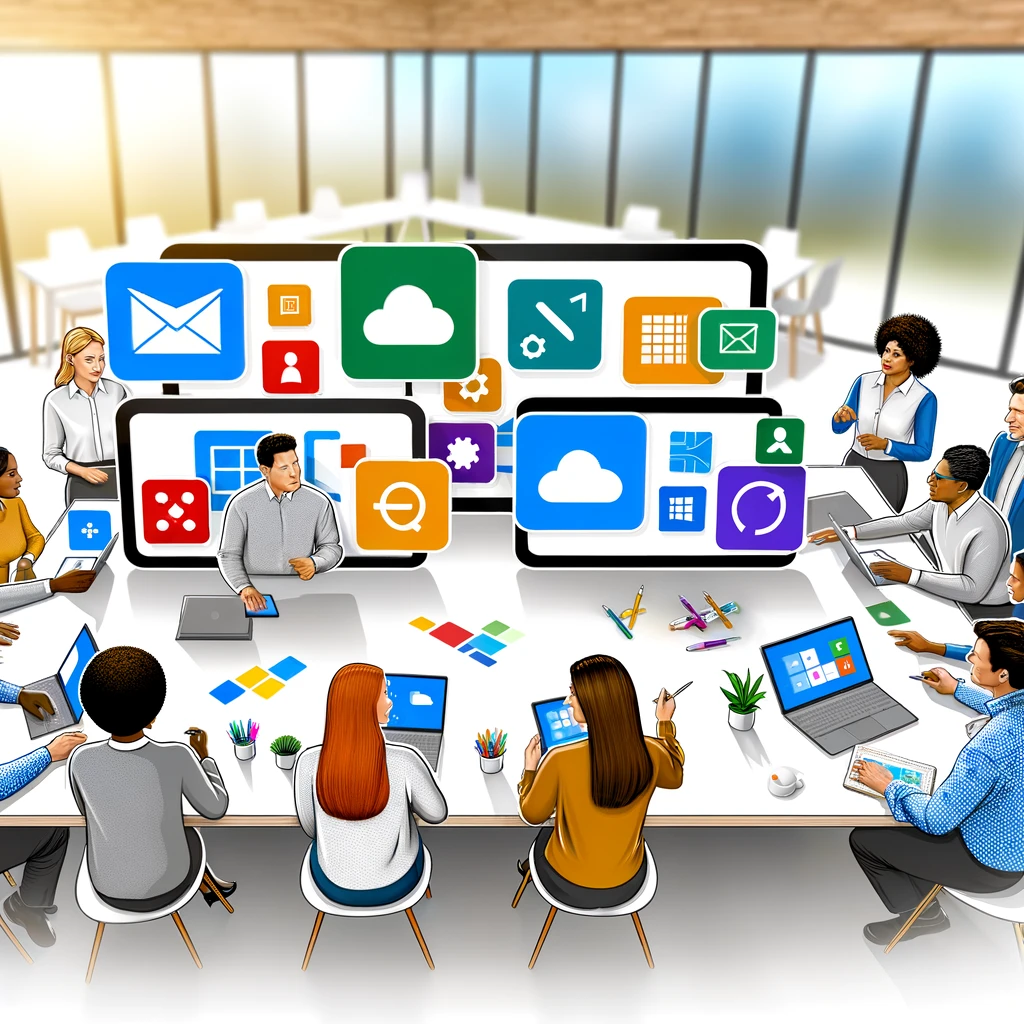
Nonprofit Pricing
Many collaboration tools offer specialised nonprofit pricing. These discounted pricing structures are designed to make technology more accessible and affordable for nonprofits, enabling them to leverage the same powerful tools as for-profit entities.
Microsoft 365 offers substantial discounts for eligible nonprofit organisations with nonprofit status, providing access to its comprehensive suite of tools at a fraction of the cost. This includes not only collaboration tools like Microsoft Teams and SharePoint but also productivity applications.
Slack also provides a special pricing package for nonprofits, offering upgraded features at reduced rates to enhance communication and teamwork. Similarly, Trello offers discounted rates for nonprofits to help them manage projects more effectively and efficiently.
Google Workspace extends discounted pricing to nonprofits as well, enabling access to its suite of collaboration and productivity tools at a reduced cost. Asana is another tool that provides nonprofit pricing to help organisations streamline their workflows and improve project delivery.
Tips for Implementing Collaboration Tools in Nonprofit Organisations
Successfully integrating collaboration tools within nonprofit organisations requires thoughtful planning and strategic execution. The first crucial step is communicating the benefits and potential impact of these tools on the organisation’s operations to the team and stakeholders.
Providing comprehensive training and support is equally important. Adopting new tools can be daunting for some staff, so providing training sessions, accessible support resources, and ongoing assistance are key to ensuring that everyone feels competent and confident in using the new tools effectively.
Establishing clear processes and guidelines on how to best use the tool is critical for maintaining order and efficiency. Such guidelines help prevent misuse and ensure that the collaboration tools are enhancing productivity.
Continuously evaluating and optimising tool usage is necessary for achieving maximum impact within your nonprofit organisation. This means regularly gathering feedback, monitoring how the tools are being used and making adjustments to workflows and tool settings as needed.
For nonprofits aiming to implement comprehensive solutions like Microsoft 365, partnering with an experienced specialist provider can be invaluable. Providers like Qlic IT can offer expertise in tailoring the suite to meet the specific needs of the organisation. This ensures seamless integration and maximises the benefits of the collaboration tools.
Final Thoughts on Collaboration Tools for Nonprofits
As we’ve navigated through various collaboration tools, the overarching message is they hold transformative potential for the nonprofit sector. By enhancing communication, streamlining project management and fostering a culture of collaboration, these tools can revolutionise how nonprofits operate. This enables your organisation to achieve your missions more effectively and efficiently.
The exploration of platforms like Microsoft 365, Slack, Trello, Google Workspace, and Asana highlights the diversity of options available to nonprofits at a discounted rate.
Each platform brings unique strengths and differences, so finding the correct one that fits within your operations and workflow is crucial.
In conclusion, the journey towards integrating collaboration tools into nonprofit workflows is both promising and challenging. Each platform offers a gateway to enhanced productivity and collaboration, but success hinges on thoughtful selection, implementation and ongoing optimisation. By prioritising these considerations, nonprofits can harness the power of these digital tools to revolutionize their internal operations and amplify their impact in the community.
GET IN TOUCH
Want to find out more about Microsoft 365 and it’s collaboration tools for nonprofits and how they can be tailored to your organisation? Book a FREE consultation with one of our IT experts by clicking the button below.
